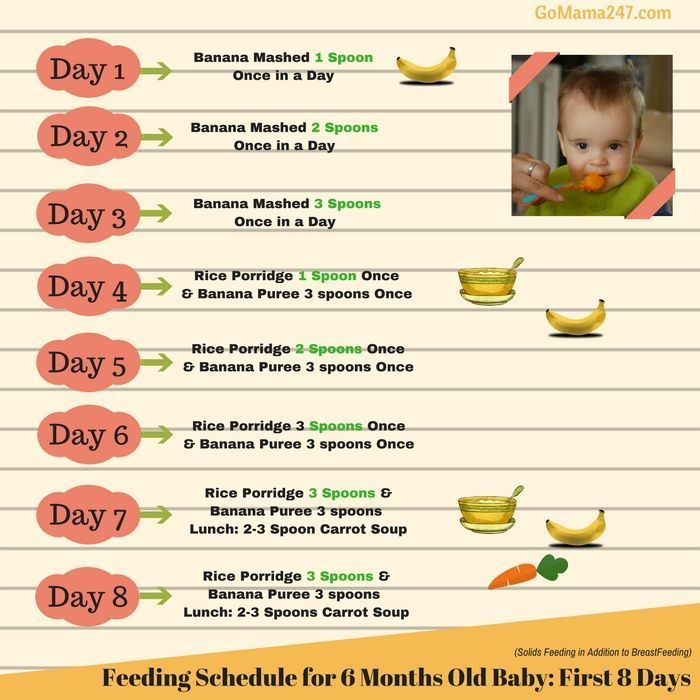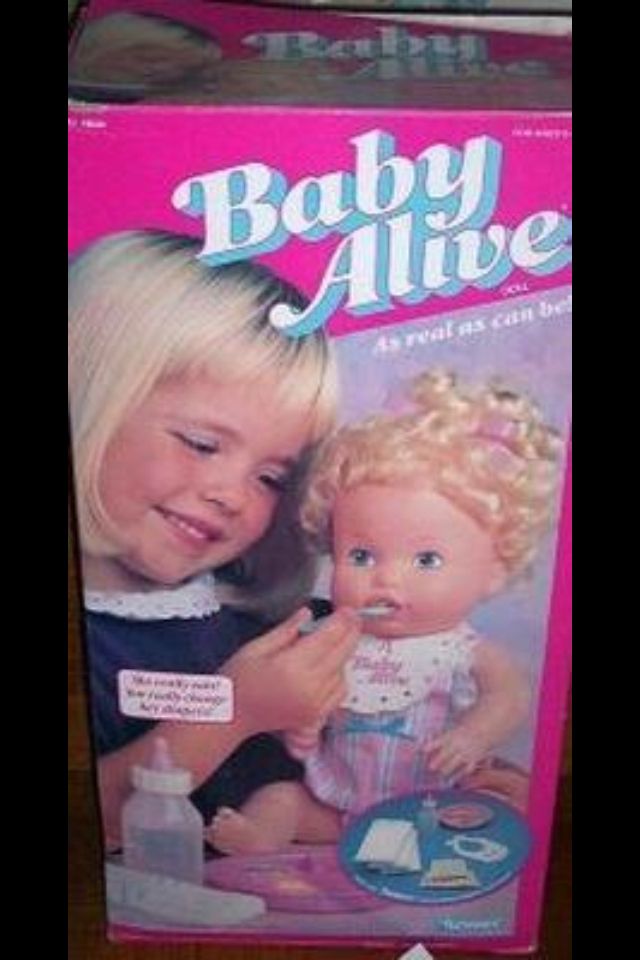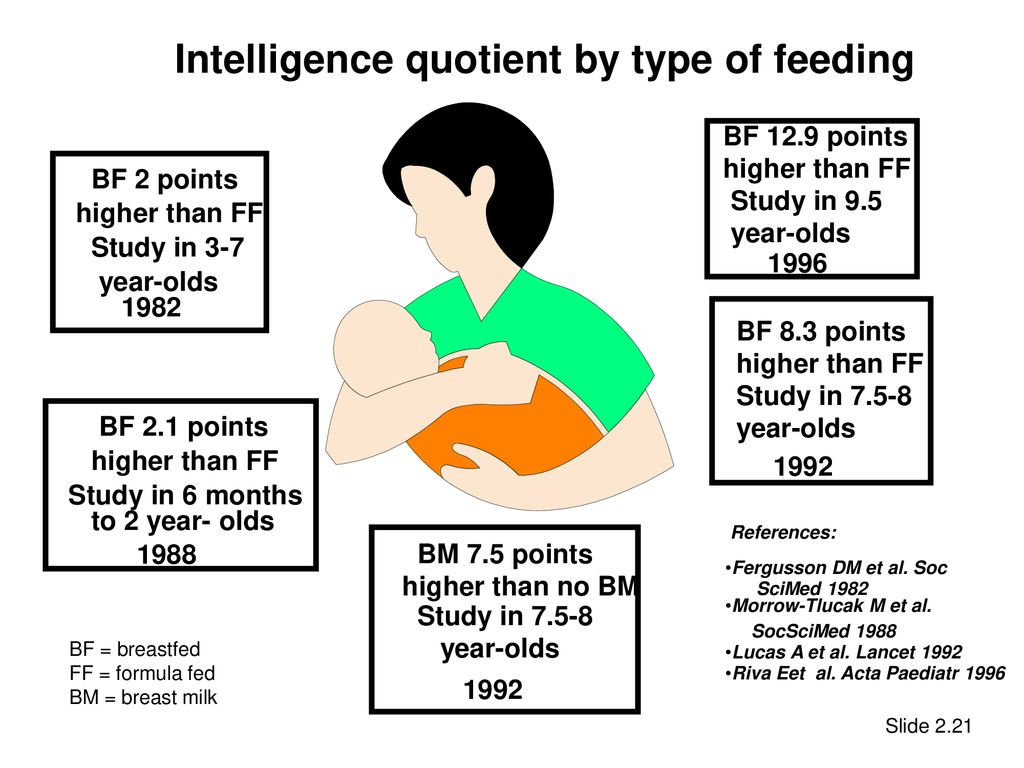Baby first bottle feed
When and how to introduce a bottle to your breastfed baby
Wondering how to introduce a bottle to your breastfed baby? Wait until 3 to 4 weeks postpartum to ensure your milk supply is well established. Have someone else make the first few attempts if possible. If your baby won't take the bottle, try varying the bottle and nipple temperature, moving around, and switching positions. Though some breastfed babies reject bottles vociferously, which can be a real challenge for parents and caregivers, many will come around.
You may be planning to give your breastfed baby bottles because you're pumping breast milk, supplementing with formula, or switching to formula feeding. The transition can be tricky, but there are ways to make it easier. Here's what you need to know to successfully introduce a bottle to your breastfed baby.
When to introduce the bottle to your breastfed baby
If you're breastfeeding, most experts suggest waiting until your baby is 3 to 4 weeks old and breastfeeding is well established before introducing a bottle. In addition to helping launch your milk supply, waiting a few weeks helps reduce the risk of nipple confusion, or a preference for bottles over the breast.
Exactly when to first introduce the bottle varies depending on whether you're bottle feeding because you'll be separated from your baby, or because you need to add formula to your routine.
If you're returning to work after maternity leave, start bottle-feeding several weeks before you go back. That way, you'll have plenty of time for them to adjust to the bottle.
If you're pumping breast milk, you'll want to keep up your milk supply by pumping every time your baby has a bottle. If you can, use a double electric breast pump: It's the most efficient way to express milk and stimulate milk production. (These are usually free through insurance.)
If breastfeeding isn't going according to plan for you and you're thinking about supplementing your baby's diet with formula or switching to exclusively formula feeding, try talking with a lactation consultant before making any big changes.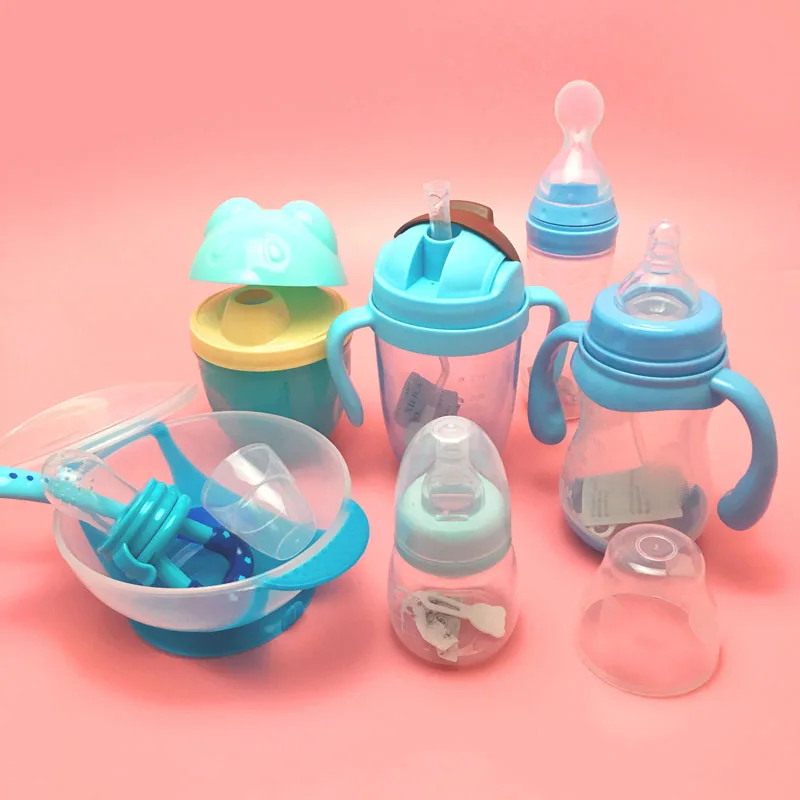 A lactation consultant can assess why you're having trouble breastfeeding and offer tricks to address challenges.
A lactation consultant can assess why you're having trouble breastfeeding and offer tricks to address challenges.
But there's no need to feel guilty if you make the switch to formula: Healthy and happy babies can be formula-fed or breastfed. Focus on nourishing your baby and giving them the love, attention, and cuddles they need to thrive.
How to bottle feed a baby
Sucking milk from a bottle requires different mouth and tongue movements than breastfeeding, so it may take your baby a little time to get used to the change. Try these tips for a smooth transition.
Offer a bottle in place of a regular feeding. Choose a time that your baby tends to not be too fussy at mealtime – say, in the morning. The amount of formula or breast milk you'll need to give at each feeding varies depending on your baby's age and weight. Our articles on how much formula and breast milk babies need break it down for you, and you can always ask your pediatrician for a recommendation if you're not sure.
Advertisement | page continues below
Or, offer the bottle after a regular feeding. If you're especially anxious about offering the bottle, or if your baby balked at the bottle in place of the breast on your first attempt, you may want to get them used to the nipple by offering the bottle an hour or two after they're already fed. That way your baby won't be frenzied for food and may be more open to experimenting with a new food source. Start with a small amount of breast milk – about 1/2 ounce.
Let someone else feed them the first bottle. If you try to give your baby their first bottle, they may wonder why they're not getting your breast. They may be less confused if someone else makes the introduction. Ask your partner, a grandparent, a childcare provider, or a friend to help. Choose a spot other than where you regularly breastfeed.
Make sure the bottle is the right temperature. Breastfed babies can be particular about the warmth of their milk; many prefer milk that's the temperature of your body or a bath (about 98 degrees Fahrenheit). You can soak the bottle in a bowl of hot water or use a bottle warmer to bring it up to temperature.
You can soak the bottle in a bowl of hot water or use a bottle warmer to bring it up to temperature.
Stay away. A baby can smell their mother, even from a distance, so they may know that you (and your breasts) are nearby. If your baby refuses a bottle with you nearby, try going to a different room during feedings.
Don't force it. The first time you introduce the bottle, don't force the nipple into your baby's mouth. Try tickling your baby's upper lip and nose with the nipple and then letting your baby "latch" onto the nipple as they would with your breast. If your baby seems frustrated or hasn't eaten anything after 10 minutes, stop and try again the next day.
Try paced (or responsive, or cue-based) feeding. This method slows down the flow of milk to mimic breastfeeding and reduce the chances that your baby will drink too much. Use a slow-flow nipple, keep the bottle horizontal, pause every 20 to 30 seconds during feedings, and switch sides as you would when breastfeeding. Stop feeding your baby when they show signs of being full, which include not sucking anymore and turning away from the bottle. Research suggests a responsive feeding style encourages healthy eating habits that last well beyond the bottle.
Stop feeding your baby when they show signs of being full, which include not sucking anymore and turning away from the bottle. Research suggests a responsive feeding style encourages healthy eating habits that last well beyond the bottle.
Bond with your baby. Talk to your baby and look into their eyes as you bottle-feed to bond and help them feel secure. You can even take off your shirt for skin-to-skin contact, which helps babies to relax while stimulating digestion and interest in feeding, among other benefits.
Be patient. It may take a while for your baby to accept the bottle.
Be consistent. Babies love routines, so aim to give the bottle the same time every day.
What to do if your baby won't take a bottle
Some babies take to the bottle without much fuss, but others struggle quite a bit with the transition.
Make sure you have lots of time and take it slow during this process. If your baby starts crying and pushes the bottle away, back off, comfort them, and then try again. If you've tried offering the bottle several times and your baby seems frustrated, or if they refuse to eat for 10 minutes, let it go for now. (Wait at least five minutes before breastfeeding after an unsuccessful bottle-feeding – that way they won't associate refusing the bottle with immediate gratification.)
If you've tried offering the bottle several times and your baby seems frustrated, or if they refuse to eat for 10 minutes, let it go for now. (Wait at least five minutes before breastfeeding after an unsuccessful bottle-feeding – that way they won't associate refusing the bottle with immediate gratification.)
Offer the bottle again in an hour or two, when your baby is alert and receptive but not very hungry.
If your baby is having a hard time, try these techniques:
- Test a few different nipples. Babies can be very particular about bottle nipples. If you've tried the bottle a couple of times and your baby still refuses to eat, test out a few other options. Your baby may prefer a wide-based nipple, which more closely simulates the breast. Or your baby may accept a nipple that's similar to the pacifier they use (if you use one), so try giving them a nipple that's the same shape or made out of the same material as the pacifier.
- Change the temperature of the nipple.
 If your baby is teething, they may prefer a nipple that's been chilled in the fridge. Otherwise, try warming the nipple under running water.
If your baby is teething, they may prefer a nipple that's been chilled in the fridge. Otherwise, try warming the nipple under running water. - Introduce breast milk outside of the bottle. Put a few drops of breast milk on your baby's lips or the nipple before feeding them from a bottle, to give them a preview of what's to come. When your baby tastes it, they may start sucking to get more.
- Let your baby play with the nipple so they can get familiar with it. If your baby just chews on it at first, don't worry. They may actually start sucking on it soon.
- Hold them in a different position during the feeding. Put your baby in an infant or car seat so they're semi-upright, and then feed them the bottle while you're facing each other. Or try feeding them on your lap with their back to your chest. Once your baby is used to taking a bottle, you can hold them in a more standard feeding position.
- Move around. Try walking or lightly bouncing your baby. Gentle, rhythmic movement may encourage them to take the bottle.

- Try different temperatures. Your baby might prefer milk that's slightly warmer or colder. Experiment with different temperatures to see what they prefer.
- Check the taste. Expressed breast milk sometimes has a soapy taste, so you may want to try a drop.
- Offer the bottle at other times of day. If your baby won't take the bottle during the day, offer it during a nighttime feeding or vice versa.
If your baby is still refusing the bottle
For most babies, bottle refusal is a short-lived developmental step. That's why it's best to give everyone time to transition by introducing the bottle well before you have to go back to work or otherwise be separated from your baby.
If your baby continues to refuse the bottle, keep trying: It can be frustrating, but your baby may eventually accept it. Until they do, you may have to make serious adjustments to your life. Some working moms have had to extend their maternity leave, change jobs, work from home with a nanny or sitter, or visit their child's daycare every two to three hours to breastfeed their bottle-refusing baby.
If you've tried everything, don't blame yourself if your baby still won't bottle-feed. Some babies never take to the bottle – but talk to your child's doctor to rule out a medical reason.
Some babies can learn to drink from an open cup or a sippy cup instead of a bottle. Make sure your baby can hold their head up on their own before trying (usually around 4 to 6 months), though, to reduce the risk of choking. Here's how to start using a sippy cup:
- Support your baby's head and shoulders with your arm and sit them upright in your lap.
- Place the cup on your baby's lower lip and tilt it until the milk or formula is close to their lips.
- Wait until your baby laps up the milk with their tongue, which may take a few minutes. Don't pour the milk straight into your baby's mouth.
- Continue to offer the milk until your baby turns away their head or offers other cues that they're finished.
- You may want to try this method first with another adult for practice.
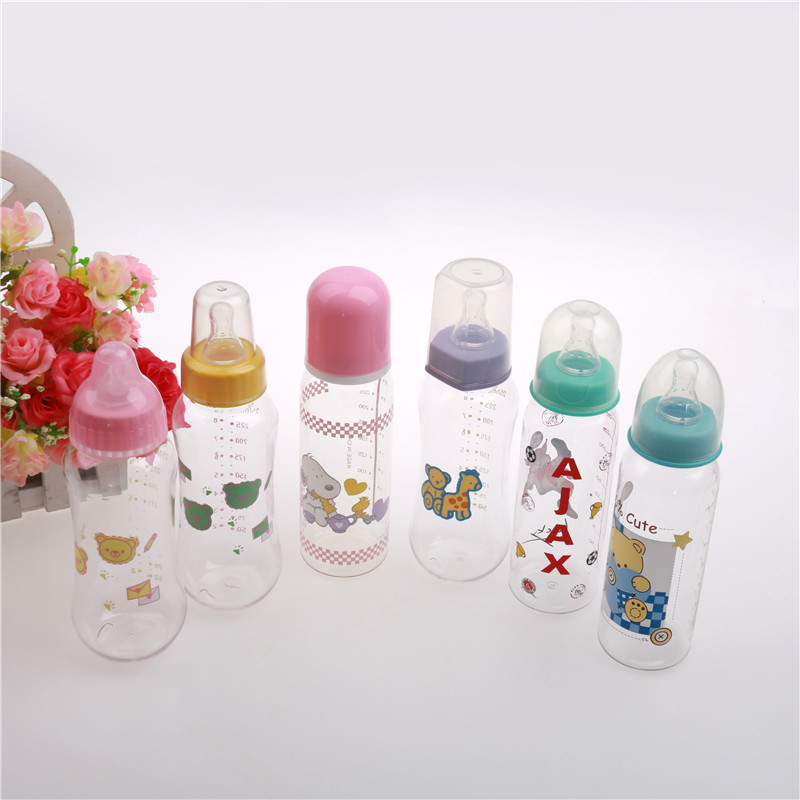 Once you're ready to test it out on your baby, be prepared with a bib and burp cloth nearby to wipe up spills.
Once you're ready to test it out on your baby, be prepared with a bib and burp cloth nearby to wipe up spills.
Eight Tips for How to Introduce Bottle-Feeding
As a nurse in the Institute for Maternal-Fetal Health at Children’s Hospital Los Angeles, I meet many moms who are intimidated when it comes to knowing when and how to introduce bottle-feeding to their babies. It can be especially intimidating because of the many myths associated with starting bottle-feeding. My experience helping moms on this issue is what inspired this post and I hope to help ease the anxiety for those who wonder when and how to introduce bottle-feeding.
There are no mandatory rules about when to add a bottle to a baby’s feeding routine, but here are some expert tips that may make the process easier. (Tweet this)
1. Add a bottle after a healthy milk volume is established from your breast. If you are exclusively breastfeeding and want to keep it that way, then only introduce a bottle after you have established a healthy milk volume and breastfeeding routine. This can take up to four weeks after birth.
This can take up to four weeks after birth.
2. Continue breastfeeding or pumping to maintain milk volume. When your baby is feeding from the bottle, make it a priority to pump (and breastfeed when your baby is not using the bottle). Decreasing the amount of times milk is expressed from your breast can lead to a decrease in the volume produced.
3. Nipple confusion versus nipple preference. Many people believe that babies don’t want to be breastfed after bottle feeding or don’t want to bottle-feed after exclusively breastfeeding because of nipple confusion. This is not true. Babies do not get confused about the different feeding methods. But they do get accustomed to the breast or bottle and establish a nipple preference, which only means that they prefer one method over the other!
4. Use a bottle nipple that is wide-based, which is similar in size and shape to your nipple. I recommend wide-based nipples. Purchase a bottle with a nipple that is more similar to the human breast. These nipples are usually wide-based with shorter nipple heights. The nipple requires that the baby take a larger amount of the nipple into its mouth, similar to breastfeeding.
Purchase a bottle with a nipple that is more similar to the human breast. These nipples are usually wide-based with shorter nipple heights. The nipple requires that the baby take a larger amount of the nipple into its mouth, similar to breastfeeding.
5. Purchase one nipple and bottle style at a time. Some babies are very picky when it comes to bottles, especially if they have been exclusively breastfeed. It is a good idea to buy one set of a certain bottle and nipple style at a time to make sure your baby can feed well before buying a larger supply. Sometimes babies will try out multiple bottles and nipples before they decide on a favorite.
6. Use a slow-flow feeding style. A slow-flow feeding style with a bottle closely resembles that of breastfeeding. Babies that breastfed are used to working for their food and it comes out at a slower rate. Whereas, bottle-feeding is easy and takes little effort. The rate is much quicker and babies can get used to this fast rate, making breastfeeding more frustrating when returning from bottle-feeding.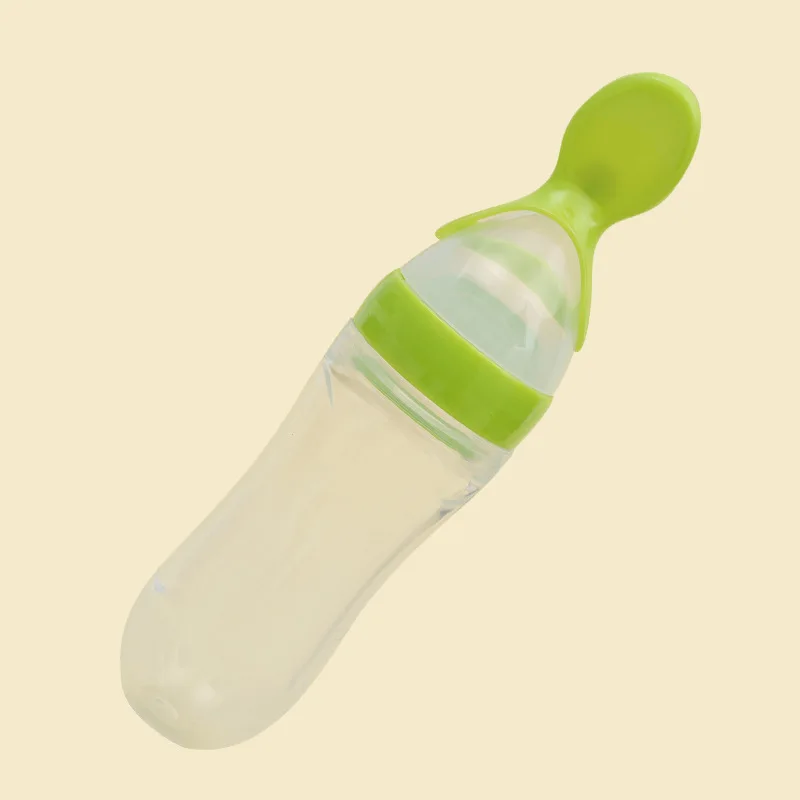 If you are using a regular nipple allow the baby to take five to ten sucks and remove the bottle. Allow your baby to swallow and breathe. Then reinsert the bottle and start again. This process should encourage your baby to slow down their feeding. The feeding should take roughly 15 minutes, similar to that of a breastfeeding session.
If you are using a regular nipple allow the baby to take five to ten sucks and remove the bottle. Allow your baby to swallow and breathe. Then reinsert the bottle and start again. This process should encourage your baby to slow down their feeding. The feeding should take roughly 15 minutes, similar to that of a breastfeeding session.
7. It takes time. Many exclusively breastfed babies do not accept a bottle right away, so it may take a couple of attempts before your baby gets the hang of it. Be patient and continue to offer the bottle to your baby.
8. Introduce bottle-feeding two to four weeks before going back to work. By doing this, you can establish a pumping routine, allow your baby time to adjust to the bottle and give you a chance to see that your baby is able to feed from the bottle effectively. The above tips will help you a lot when you begin your journey of bottle-feeding your baby. Most of the time a baby will accept a bottle very well, but there are a few that can really make the transition frustrating.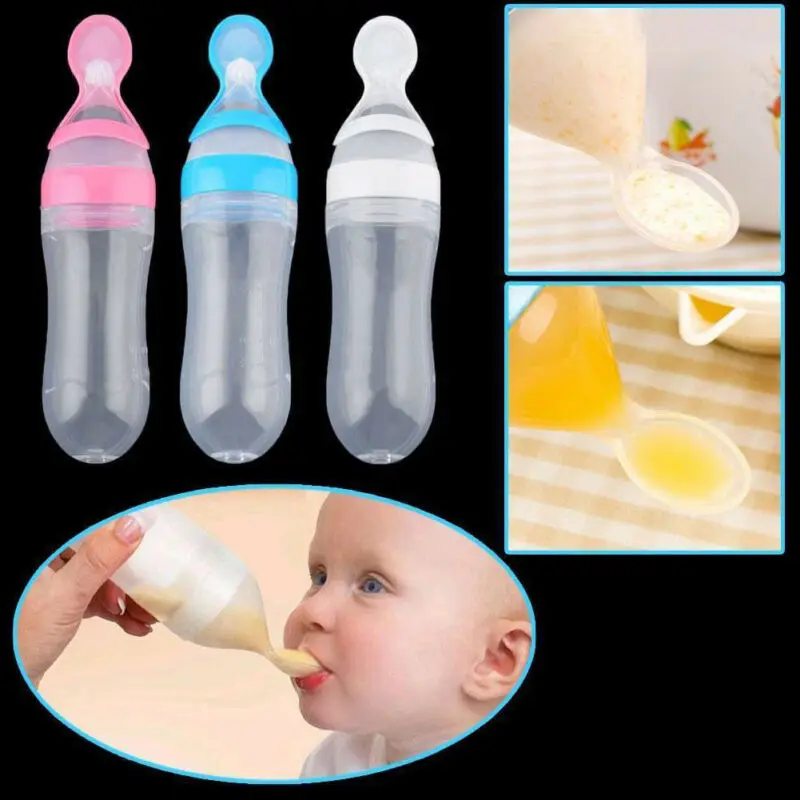 If you are having a difficult time introducing bottles or your baby does not seem to be feeding as well with a bottle, please enlist the help of a breastfeeding expert.
If you are having a difficult time introducing bottles or your baby does not seem to be feeding as well with a bottle, please enlist the help of a breastfeeding expert.
Thank you for taking the time to read my post, I hope you found this information helpful. If you want advice on a specific topics please feel free to write a comment and I can address your needs in future posts.
How to bottle feed your baby
There is no better food for a newborn baby than breast milk. But sometimes breastfeeding is contraindicated for the mother.
Tags:
Children
newborns
Philips
There is no better food for a newborn baby than breast milk. But sometimes breastfeeding is contraindicated for the mother.
Do not self-medicate! In our articles, we collect the latest scientific data and the opinions of authoritative health experts. But remember: only a doctor can diagnose and prescribe treatment.
But remember: only a doctor can diagnose and prescribe treatment.
Mother's milk has an optimal composition, it contains substances that help the baby fight infections and strengthen his immunity.
However, unfortunately, there are often situations in which it is impossible to continue breastfeeding:
- mother's illness when she has to take medicines that affect the quality of breast milk;
- mother's going to work;
- lack of breast milk.
Depending on the situation, breast milk can be expressed and bottle fed to the baby; transfer the baby to artificial feeding; alternate breast milk feeding with bottle feeding. In each of these cases, the mother is faced with the question of how to feed the baby from a bottle.
Bottle feeding technique
To ensure that the baby does not experience discomfort during bottle feeding, some basic rules must be observed:
ADVERTISING - CONTINUED BELOW
- Try to give your baby warm milk or formula - most babies prefer to be fed warm.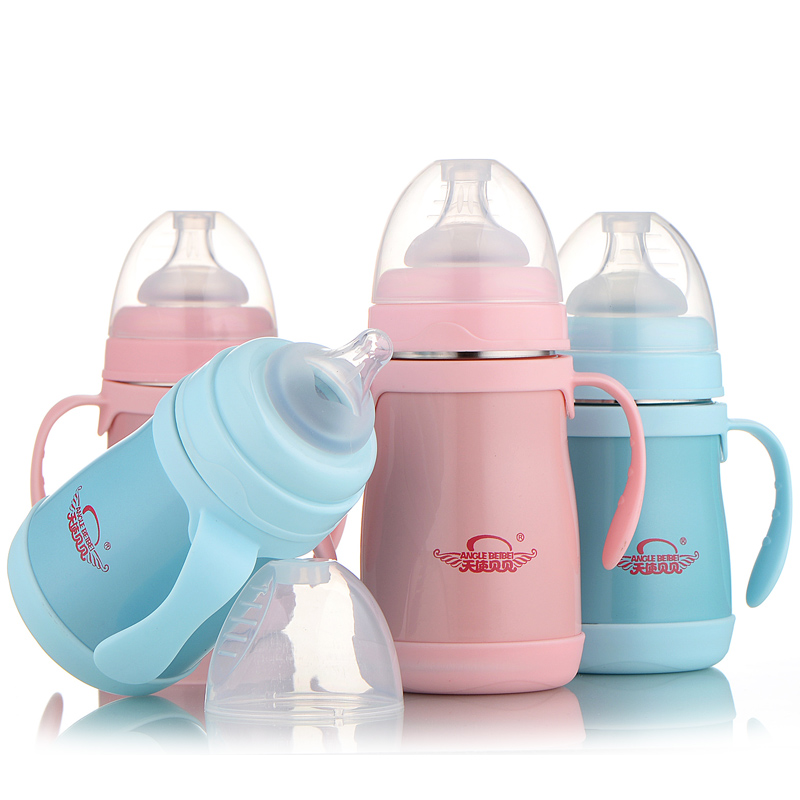 To check the temperature of the mixture, drop it on the inner surface of your wrist - the feeling should be comfortable.
To check the temperature of the mixture, drop it on the inner surface of your wrist - the feeling should be comfortable.
- If you are formula feeding your baby, be sure to check the expiration date on the box and carefully follow the instructions for preparation.
- For bottle feeding, choose a position that is comfortable for both you and your baby.
- The pacifier should be pressed lightly against the baby's lower lip so that he opens his mouth wide enough. Make sure that the tongue is located below, under the nipple. If the baby's lips close around the wide part of the nipple, closer to the base, it means that he took the nipple correctly.
- Do not rush your child and do not force him to eat the whole portion: some children eat quickly, others slowly, and some like to eat with breaks. Be patient.
- Always hold the bottle in a tilted position: this helps the nipple fill with milk or formula, which means that the baby will not swallow air. Make sure that the nipple does not become clogged or flattened. If this happens, change the pacifier.
Make sure that the nipple does not become clogged or flattened. If this happens, change the pacifier.
- After the child has eaten, pour out the rest of the mixture so as not to provoke a bacterial infection.
- After eating, lightly pat your baby on the back to help expel the swallowed air.
We hope this bottle feeding technique helps you and your baby.
Choosing a bottle
The first thing you need to pay attention to is the material from which the bottle is made. Glass bottles tend to be heavier than plastic bottles and break easily. But they have a longer service life, while plastic bottles can become cloudy or crack quite quickly. But you can’t do without a plastic bottle on a walk and when the baby begins to learn to hold it on his own.
Another important nuance - when choosing a bottle, be sure to pay attention to the presence of clear divisions that will help you determine the volume of breast milk or formula.
Most baby bottles from well-known manufacturers are equipped with anti-colic protection. They are equipped with various mechanisms that prevent air from entering the baby's stomach and thereby reduce the likelihood of colic.
Philips AVENT bottles have a unique one-piece valve in the nipple skirt that lets air in and prevents a vacuum. Such a valve is easy to clean and does not break, and due to the lack of vacuum, the baby can suck in his usual rhythm, which brings bottle feeding closer to breastfeeding.
For bottles Dr. Browns has developed a special ventilation system that prevents the air entering the bottle from contacting the liquid. As the baby sucks and the liquid decreases, the bottle fills with air and no vacuum occurs.
The presence of a special valve in bottles Nuby also does not allow air to mix with formula or milk, thereby relieving the child of stomach cramps.
Just as important is choosing the right pacifier.![]() Most nipples today are made from latex or silicone. Silicone teats are odorless, more durable and easy to disinfect. The second important point when choosing a nipple is the intensity of the flow. For the smallest, it is better to choose a nipple with one or two small holes, for an older child - with several holes.
Most nipples today are made from latex or silicone. Silicone teats are odorless, more durable and easy to disinfect. The second important point when choosing a nipple is the intensity of the flow. For the smallest, it is better to choose a nipple with one or two small holes, for an older child - with several holes.
Some manufacturers offer large-diameter nipples that mimic the shape of a woman's breasts to prevent breast rejection during mixed feeding.
Bottle and nipple care
If your baby is under one year of age, it is important to practice good hygiene when bottle feeding. The immune system of young children is still weak enough to successfully resist all infections. If you do not pay enough attention to the handling of the bottle, pacifier and other feeding items, the baby may experience indigestion or diarrhea.
Wash items thoroughly with warm soapy water after each feeding and sterilize before the next feeding to remove all bacteria from the surface. For sterilization, it is best to use bottled or clean filtered water - this will help to avoid the appearance of plaque on the dishes. One of three sterilization methods can be used:
For sterilization, it is best to use bottled or clean filtered water - this will help to avoid the appearance of plaque on the dishes. One of three sterilization methods can be used:
1. Boiling. Items that need to be sterilized should be placed in a saucepan, filled with water and placed on the stove. Boil 5 minutes.
2. Microwave processing. Place the items in a glass saucepan, fill with water, cover with a lid and put in the microwave for 5-8 minutes.
3. Treatment in a special sterilizer for bottles.
Advice from Leyla Namazova-Baranova, Doctor of Medical Sciences, Professor of MMA named after. Sechenov., Director of the Research Institute of Preventive Pediatrics and Rehabilitation Treatment, Philips AVENT expert
1. Clean and sterilize all parts before each use.
2. Do not use abrasive cleaners or antibacterial cleaners on bottles and teats.
3. While inspecting the nipple, pull it in all directions to make sure it is intact.
4. Throw away bottles and nipples at the first sign of damage, wear and scratches.
5. Change nipples and cups every 3 months.
6. Do not heat milk in a microwave oven, as uneven heating may occur, which may cause burns to the baby during bottle feeding.
7. Always check the milk temperature before feeding.
Source: baby.ru
How to bottle feed: tips and tricks
Kiseleva Elena Sergeevna
Candidate of Medical Sciences, Scientific Advisor MAMAKO ®
Breast milk is the best food for your baby*. But breastfeeding is not possible for all women. For moms who can't breastfeed or keep breastfeeding for as long as they would like, quality infant formula is a healthy alternative.
The best thing is when the baby is in her arms, ideally in skin-to-skin contact: such a position when bottle-feeding, as well as during breastfeeding, creates close contact between mother and baby, helps them get closer, strengthen emotional connection.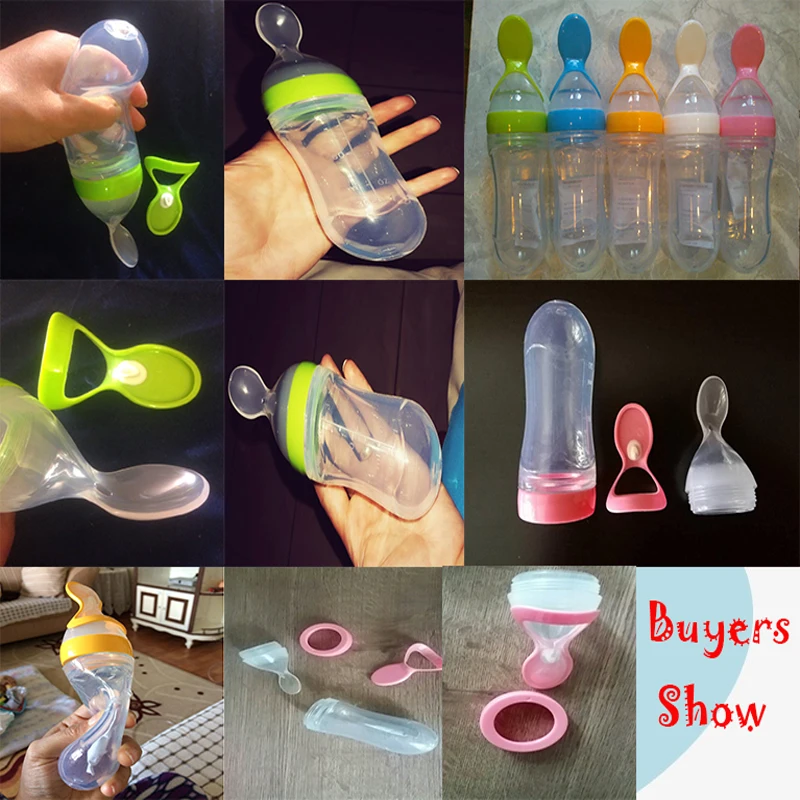
Feeding time is a time to be together and communicate with the baby (and for dad too).
The first days of life are a period of adaptation of crumbs to the outside world. And the first thing he's looking for is protection and comfort . In the moments of application to the skin of the baby, it warms the warmth of the mother's body, soothes and comforts her smell and heartbeat, so familiar to him even before birth. Gentle touches and calm breathing, a smile and a soft voice of a mother, a mixture warm as breast milk give the baby everything he needs - safety, warmth and nutrition.
Love and contact is the most important "ingredient" in any feeding process and infant formula is rich vitamins and nutrients that are good for your baby's health and development will help you feel confident in your ability to care for your baby.
In theory, feeding your baby formula is just a few simple steps. But if you've never made a bottle of baby food or the time is three in the morning, things seem complicated. Be patient to get into the rhythm.
Be patient to get into the rhythm.
For most mothers, bottle feeding becomes a part of baby food. And this does not depend on whether the bottle contains expressed breast milk or formula. The important thing is that sticking to breastfeeding exclusively can be difficult or impossible over time. Then the mother begins to supplement the baby with a mixture or transfer it to completely artificial feeding.
What follows is answers to parents' questions about how to properly and safely bottle feed your baby.
1. How to prepare a formula bottle
We offer together step by step the process of preparing the first bottle for your baby.
- Hand hygiene : Wash hands thoroughly with soap and warm water before handling bottles and feeding the baby. We also check the cleanliness of the table and measuring spoon.
- Sterilization : bottles and teats should preferably be sterilized beforehand.
- Water preparation : boil bottled baby water and cool to 40 ˚C, determine the right amount of water, then pour it into the bottle up to the desired mark - according to the number of scoops of dry formula according to the weight and age of your child.

- Let's determine the volume of the mixture : on the jar, in the "Feeding table" block, it is indicated how many spoons are required for one feeding. The measuring spoon should be full and without a slide - we remove the excess on a special corner of the jar. Both day and night, it is best to look at the feeding chart (unless otherwise determined by your doctor) so as not to accidentally add too much or too little formula. An overly dilute formula or an excess of it can interfere with a child's proper nutrition.
- Mixing according to instructions : pour the desired amount of product without a slide into a bottle of prepared water. Next, close the bottle with a lid and roll between the palms. If the bottle is shaken, a lot of foam may form.
- Checking the temperature of prepared meals : put a drop of the mixture on the inside of the wrist, where the skin is as sensitive as in a baby's mouth. Immediately after preparing the mixture, tightly close the jar of baby food and feed the baby.

- Let dad give a bottle of and be alone with the baby - they also need communication and time to make friends. The reality is that many dads feel left out while breastfeeding, but this can be avoided with formula feeding. Show how to hold your baby and bottle, support your partner during the first feedings . This help will be useful for you too. An extra pair of hands when bottle feeding gives mom a little more precious time.
2. What water to use for infant formula
Only boiled bottled baby water should be used in the bottle. This is a great way to make sure the water you use is safe for your baby.
All children's water is registered by Rospotrebnadzor in accordance with SanPiN 2.1.4.1116-02. Such water corresponds to the indicators of the highest category, is balanced in terms of mineral composition and is characterized by low total mineralization in the range of 200-500 mg / l (a baby’s body is simply not able to absorb higher concentrations of minerals and salts).
Packaged water may look the same. But some manufacturers divide baby water into two categories - for drinking and for preparing mixtures. The composition of drinking water contains a higher concentration of minerals that are beneficial for the child's body, but they can upset the balance of the nutrient mixture. Therefore, on the labels you can read about the different purposes of water: suitable for preparing baby food or for feeding babies and young children.
It makes no sense to make large stocks of baby water - water in open bottles becomes unusable after 24-48 hours, depending on the manufacturer. Tap or spring water is also not suitable for feeding babies. Such water may contain various impurities, bacteria and microbes that are dangerous for babies. Boiling will “free” water from harmful microorganisms, but not from impurities of heavy metals and chemicals.
3. How to use the measuring spoon correctly
The measuring spoon helps you accurately measure the amount of the mixture and get the correct dosage.![]() Fill a full spoon, but shoot a slide. You don't need a kitchen knife for this - each jar of mixture has a convenient wide corner for removing excess. And in economical jars with a volume of 800 g, for example, in MAMAKO ® Premium with goat milk, the spoon is conveniently attached to the lid - so you don’t have to look for it in a large package before each feeding. Fingers and knives are not absolutely clean, they always have a lot of bacteria that can spoil the mixture and harm the health of the baby. The antibacterial fastening of the spoon and the corner of the jar protect the mixture and the child from harmful bacteria from the external environment.
Fill a full spoon, but shoot a slide. You don't need a kitchen knife for this - each jar of mixture has a convenient wide corner for removing excess. And in economical jars with a volume of 800 g, for example, in MAMAKO ® Premium with goat milk, the spoon is conveniently attached to the lid - so you don’t have to look for it in a large package before each feeding. Fingers and knives are not absolutely clean, they always have a lot of bacteria that can spoil the mixture and harm the health of the baby. The antibacterial fastening of the spoon and the corner of the jar protect the mixture and the child from harmful bacteria from the external environment.
4. What temperature should the water and ready mix be?
Boiled water should be cooled to 40 °C. This temperature will retain all the benefits of baby food based on goat's milk. The easiest way to get water at the right temperature is to boil it in a kettle and let it cool for 20-30 minutes. A kettle for boiling water requires special care - it is covered with a mineral coating, which is easily removed by boiling citric acid.![]() This is a troublesome procedure, since after cleaning it takes about 3-4 boils to remove traces of detergent. Create a rhythm for preparing dishes - at night or with a crying baby in your arms, there will be no time for this. The finished formula should be warm: 37 ˚C, as this is the temperature of breast milk and it is optimal for the baby's food. Before feeding, do not forget to check if the mixture is too hot by applying a couple of drops on the wrist. If it burns, you can hold the bottle under cold water for a while, after closing the nipple with a lid. If the mixture has cooled slightly, it is enough to heat it under a warm stream of water.
This is a troublesome procedure, since after cleaning it takes about 3-4 boils to remove traces of detergent. Create a rhythm for preparing dishes - at night or with a crying baby in your arms, there will be no time for this. The finished formula should be warm: 37 ˚C, as this is the temperature of breast milk and it is optimal for the baby's food. Before feeding, do not forget to check if the mixture is too hot by applying a couple of drops on the wrist. If it burns, you can hold the bottle under cold water for a while, after closing the nipple with a lid. If the mixture has cooled slightly, it is enough to heat it under a warm stream of water.
5. Mixed feeding: breast or bottle first
The best feeding schedule is when a mother supplements her baby with formula after breast milk. If the baby is given a bottle first, then he may begin to refuse the breast. This is due to the fact that it is easier to suck through the nipple, and with natural feeding, the baby has to “work” a lot to get mom's milk.
6. How many baby bottles do you need per day
It's all about how old you are on formula, how much formula you give and how often your baby eats. It's best to keep six to ten bottles on hand so you always have clean dishes. In addition, the more bottles, the less often they will have to be sterilized. Buy 125 ml bottles for an infant, then upgrade to 150 ml and 240 ml as your baby's appetite and needs increase. Don't rush to part with smaller bottles, they are great for supplementing and watering.
7. Why can't the bottle be held horizontally during feeding
Mom tilts the bottle so that the nipple is always filled with formula. The angle of inclination increases as the bottle empties, so it is important to be close to the baby, not leaving him alone during feeding even for a minute. If you do not tilt the bottle, the child will begin to swallow air. Air bubbles can cause regurgitation during or immediately after feeding. In addition, when air enters the baby’s stomach, he feels full faster, which means he eats less and will be hungry after a short period of time.
8. Which nipple to choose for your baby bottle
Many wide and narrow neck bottles already come with a set of baby nipples. Almost all of them are made of silicone. Which shape of the nipple - anatomical or round - and what size of hole your child will like, can be understood by his reaction during feeding. If the mixture drips from the corners of the mouth, the flow may be too fast due to the large opening. If the baby is sucking hard, the mixture may drip too slowly. We recommend that you do not enlarge the opening of the nipple: it may tear, and the microparticles of the product may enter the child's body. Perhaps the hole is just clogged, this sometimes happens. If necessary, nipples can be replaced and bought separately from the bottles.
9. Should baby bottles be sterilized
Yes, to limit the spread of bacteria. Hard-to-reach places of the bottle must be washed from the mixture (a brush and warm water are enough) before sterilization.![]() A sterilizer is ideal for this purpose - ultrasonic, electric or steam for a microwave oven. It can sterilize all baby accessories - bottles, nipples, caps, brushes. Of course, you can replace the sterilizer with a simple boil, but be careful that the water does not boil away, otherwise the bottles and nipples will be damaged and become dangerous.
A sterilizer is ideal for this purpose - ultrasonic, electric or steam for a microwave oven. It can sterilize all baby accessories - bottles, nipples, caps, brushes. Of course, you can replace the sterilizer with a simple boil, but be careful that the water does not boil away, otherwise the bottles and nipples will be damaged and become dangerous.
10. Can I use the microwave to heat formula
Resist the temptation to microwave the formula and save time. Microwave ovens heat liquids unevenly. Even if the bottle is not hot, the mixture can warm up quite strongly: there is a risk of burning the baby. In addition, heating in the microwave can break down the nutrients in the formula.
11. Can leftover formula be stored
If your child has not finished formula, discard any leftover formula. No need to heat up and reuse it. It's not safe for the baby. After a while, bacteria begin to multiply in the finished mixture. Dilute a fresh batch of formula every time the baby is hungry.
12. How to prepare a bottle while traveling
If you will be away from home or on the road for several hours, you can take two bottles of warm boiled water in a thermal bag that keeps you warm. Before each feeding, it remains to pour the right amount of mixture into the bottle (it is convenient to measure portions in advance according to the number of feedings in the infant formula dispenser). If the water in the bottle is cold, it is enough to warm it under warm water (this will take a little time). Bottles and teats should last until the next opportunity to wash and sterilize them. Remember that a thermal bag is good for maintaining the temperature of boiled water, but it cannot be used to store the finished mixture - this is harmful to the baby's health.
MAMAKO ® fully supports breastfeeding, but since this is not always possible, we have shown you how to bottle feed with love. In addition, the preparation of baby food will become a conscious and important matter.





